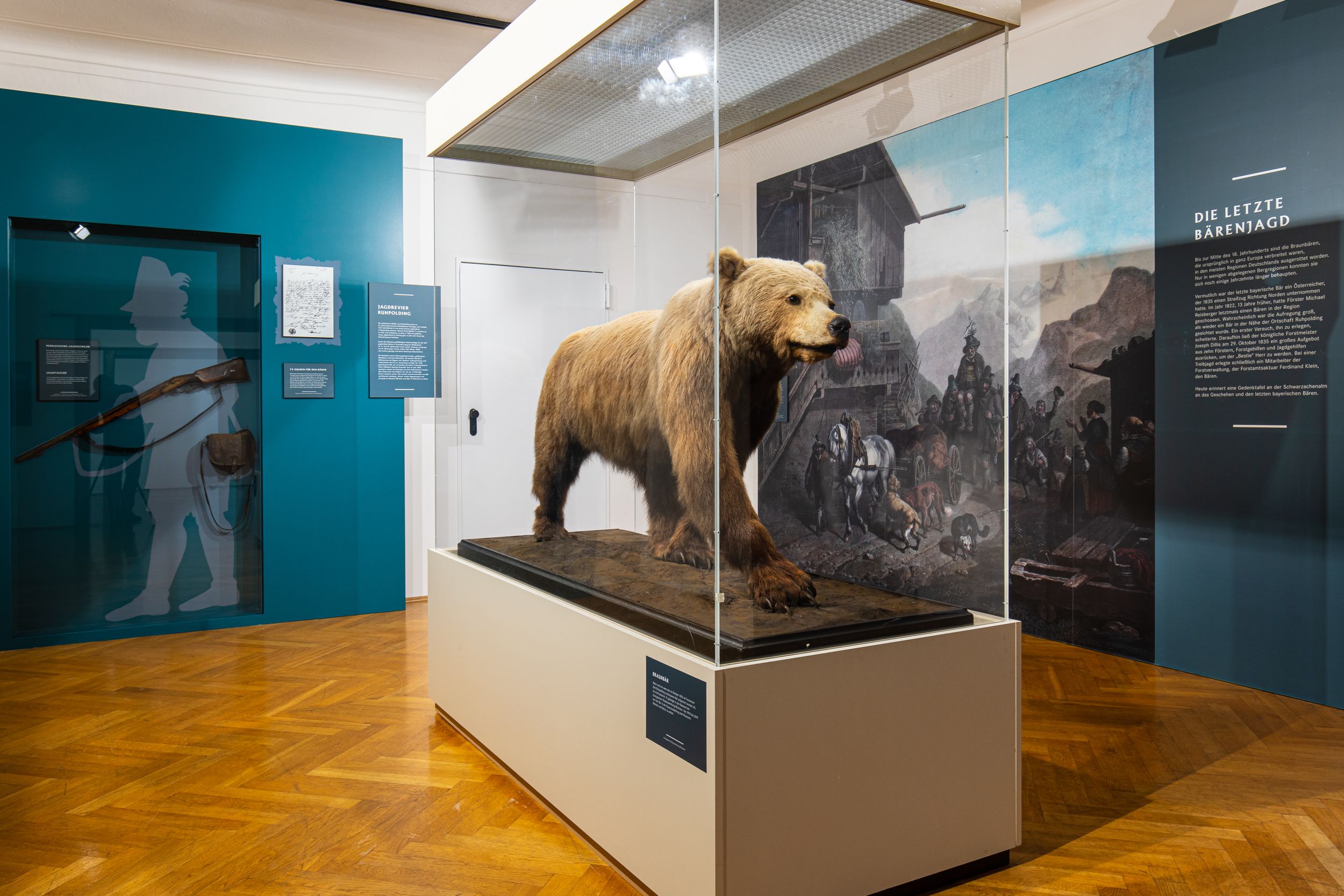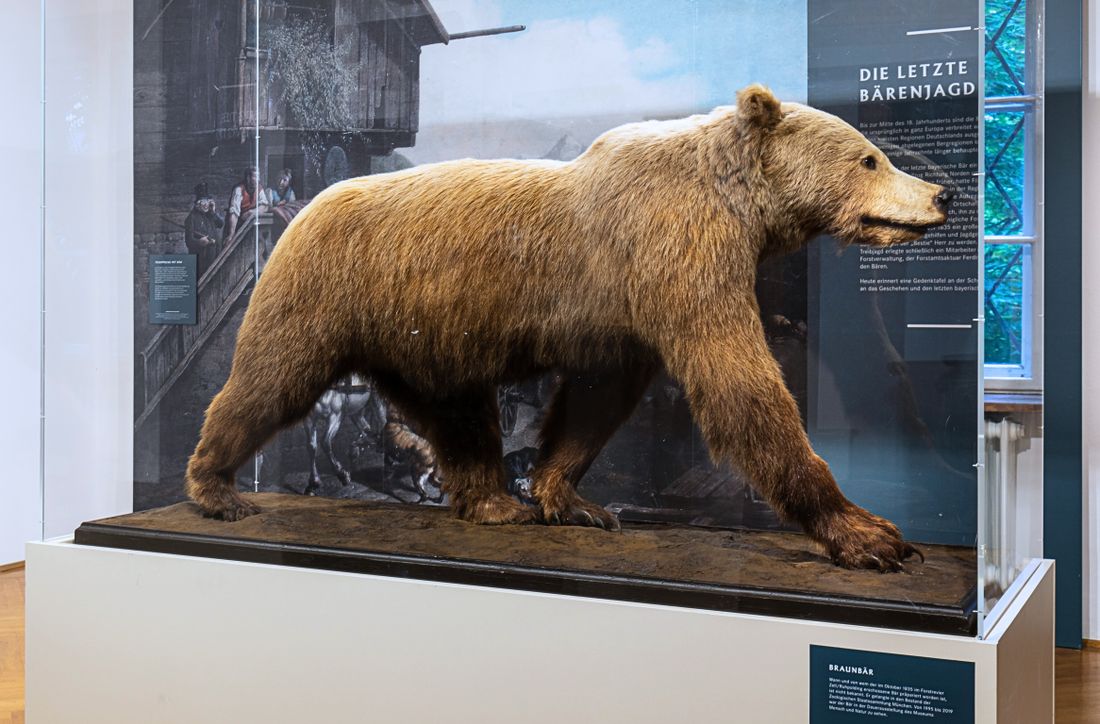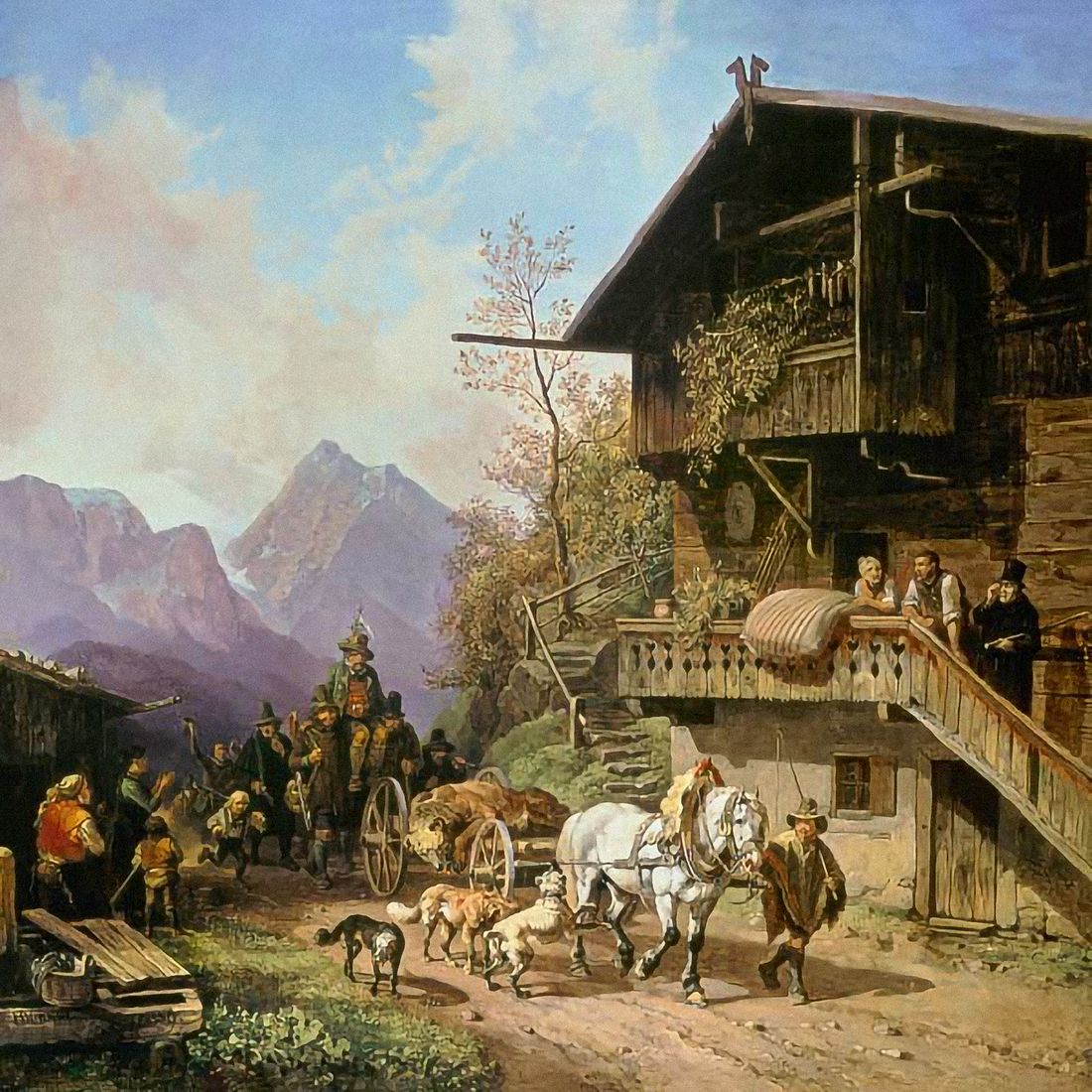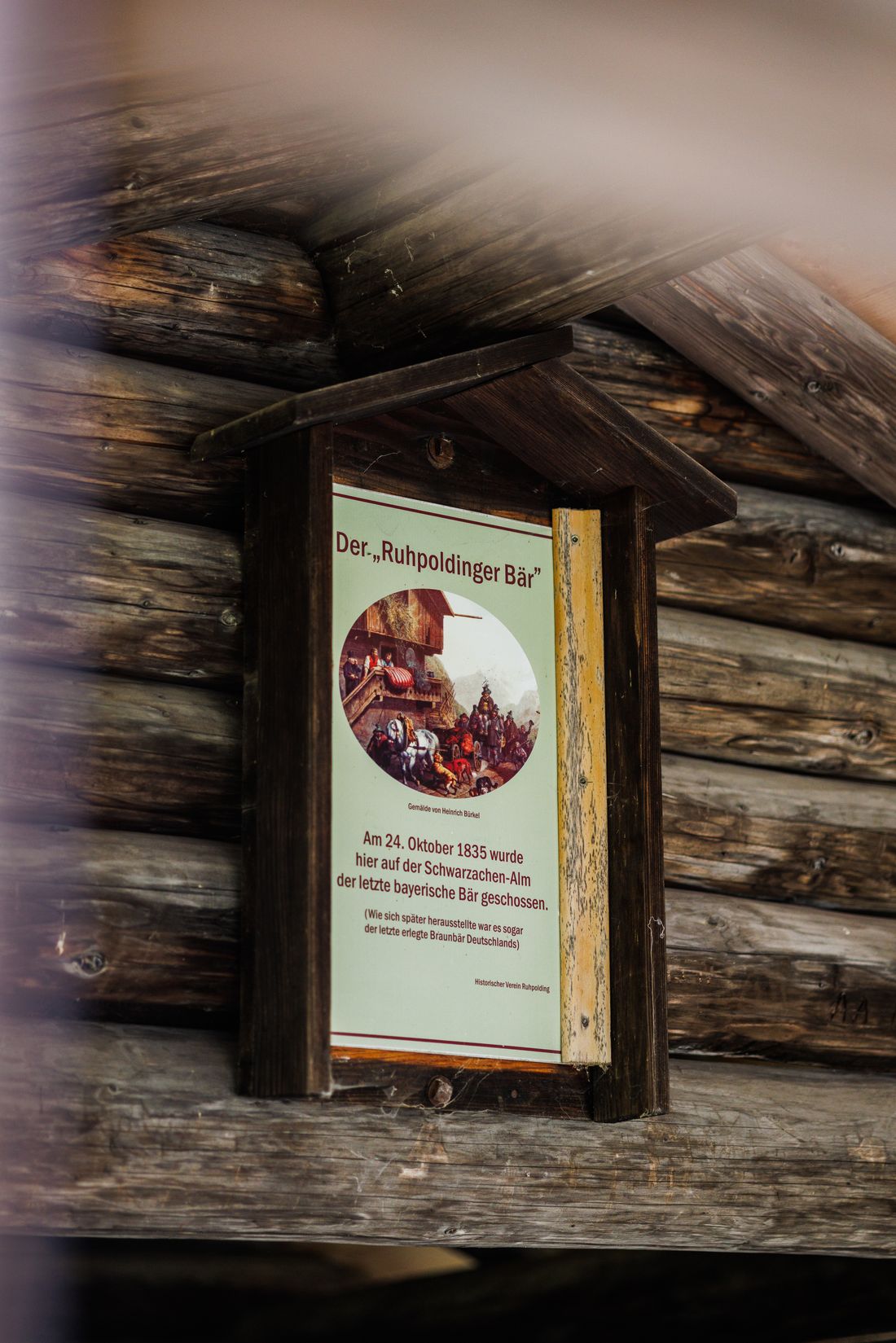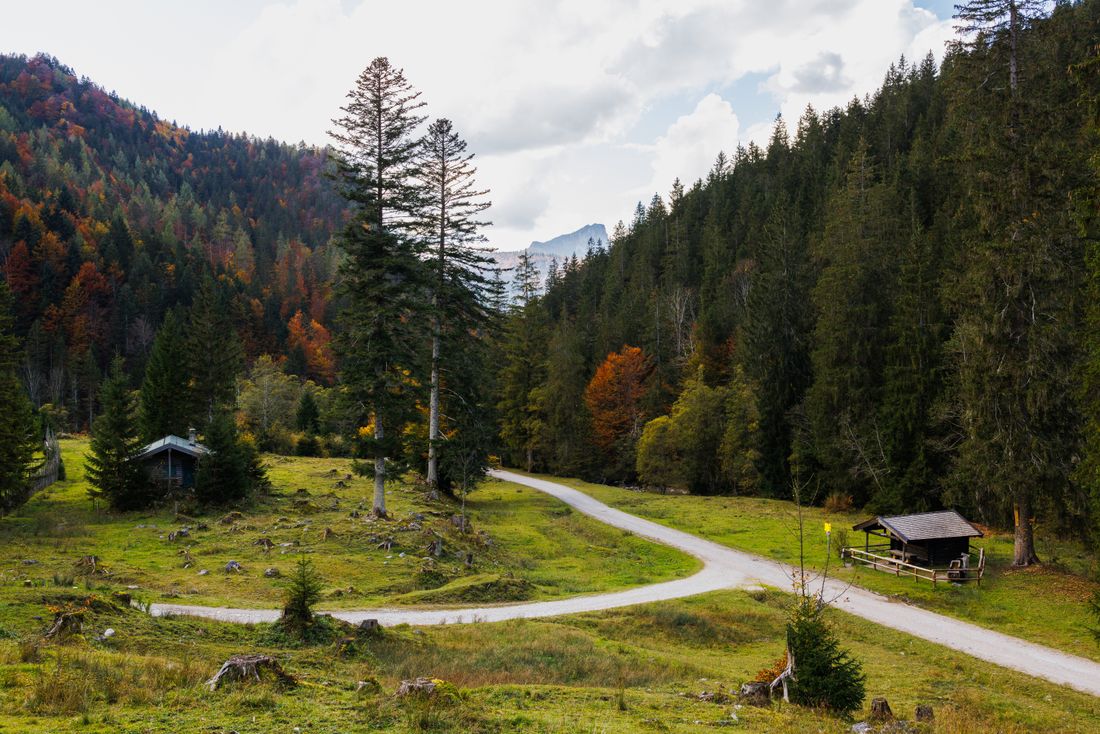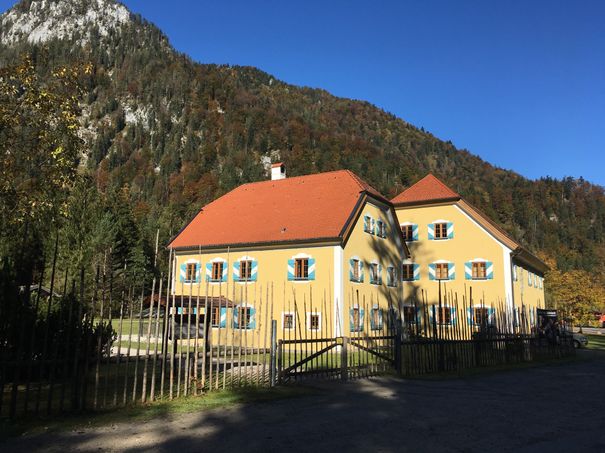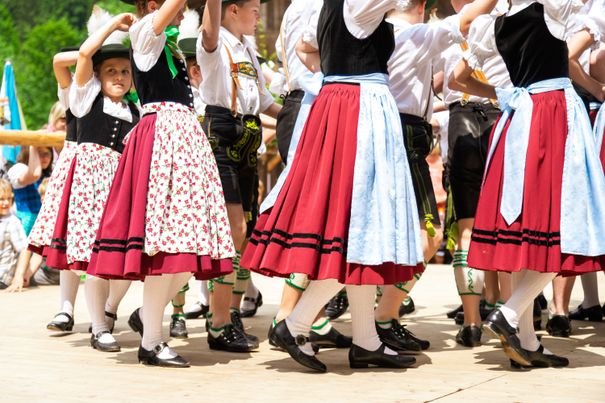Predators such as the bear, the wolf and the lynx were hunted everywhere in Central Europe and were almost wiped out by the end of the 19th century. The Ruhpolding Bear, shot in 1835, is assumed to have been the last brown bear to live in Germany and in the wild.
Until 2006, when a specimen came over from Austria to Bavaria and was known as “Problem Bear Bruno”. Normally, the big predators stay out of people’s way. For that to continue, it is essential that they retain their shyness of people. Once a bear has lost its respect of people and helped itself in the henhouse or rubbish bins, it is difficult to re-educate it again. This was also the problem with Bruno, who met a similar end to the Ruhpolding Bear. Bruno can be seen at the Museum of Man and Nature in Munich, where he has replaced the brown bear from Ruhpolding. The latter has returned home, however, more than 200 years after Ferdinand Klein’s deadly shot. This time, however, much to the delight of the local people. He rests peacefully behind glass in the “Bartholomäus-Schmucker Heimatmuseum”, formerly the ducal hunting chateau of the House of Wittelsbach. Stuffed and prepared – and somehow very satisfied.
